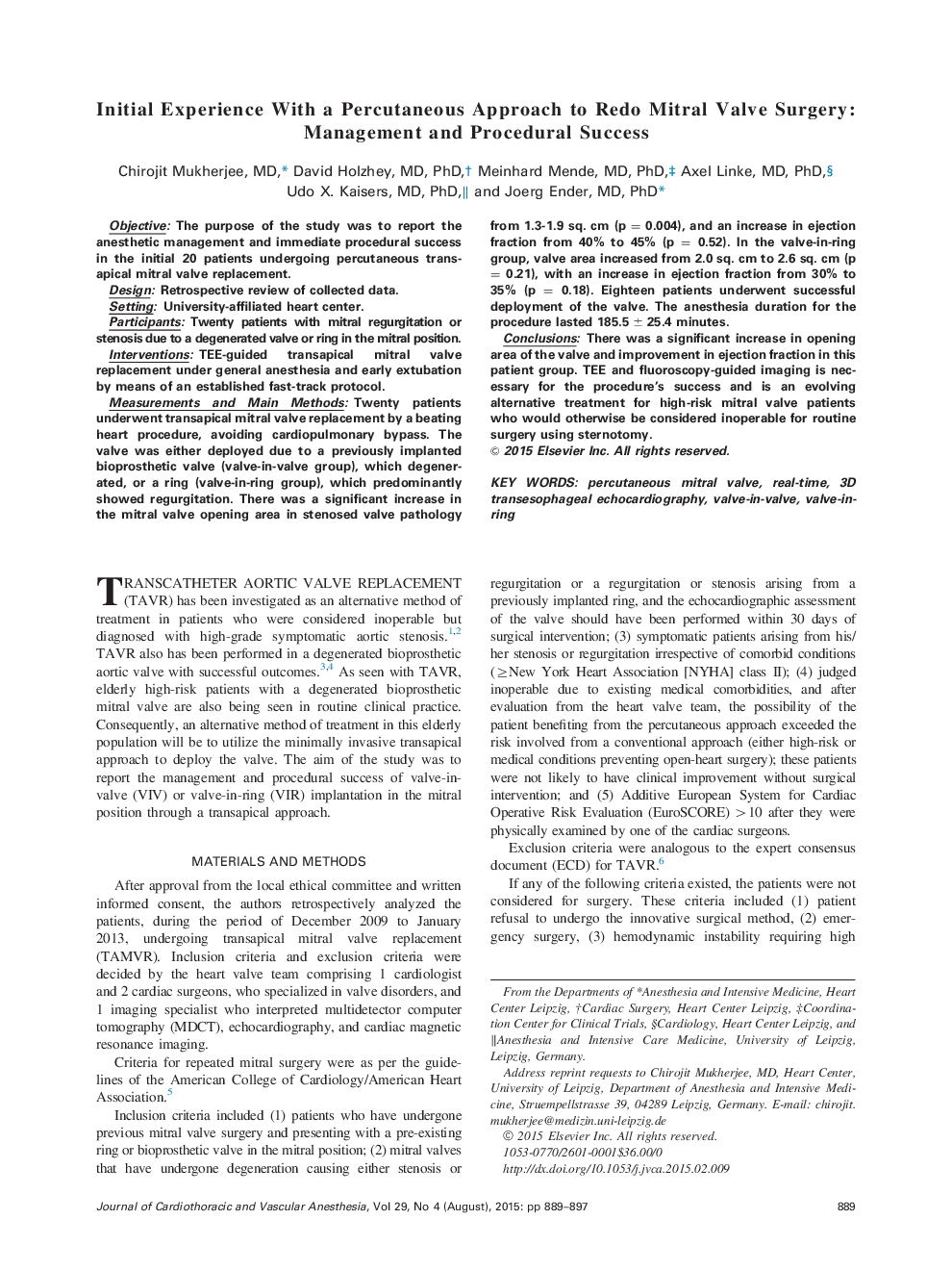| Article ID | Journal | Published Year | Pages | File Type |
|---|---|---|---|---|
| 2758741 | Journal of Cardiothoracic and Vascular Anesthesia | 2015 | 9 Pages |
ObjectiveThe purpose of the study was to report the anesthetic management and immediate procedural success in the initial 20 patients undergoing percutaneous transapical mitral valve replacement.DesignRetrospective review of collected data.SettingUniversity-affiliated heart center.ParticipantsTwenty patients with mitral regurgitation or stenosis due to a degenerated valve or ring in the mitral position.InterventionsTEE-guided transapical mitral valve replacement under general anesthesia and early extubation by means of an established fast-track protocol.Measurements and Main MethodsTwenty patients underwent transapical mitral valve replacement by a beating heart procedure, avoiding cardiopulmonary bypass. The valve was either deployed due to a previously implanted bioprosthetic valve (valve-in-valve group), which degenerated, or a ring (valve-in-ring group), which predominantly showed regurgitation. There was a significant increase in the mitral valve opening area in stenosed valve pathology from 1.3-1.9 sq. cm (p = 0.004), and an increase in ejection fraction from 40% to 45% (p = 0.52). In the valve-in-ring group, valve area increased from 2.0 sq. cm to 2.6 sq. cm (p = 0.21), with an increase in ejection fraction from 30% to 35% (p = 0.18). Eighteen patients underwent successful deployment of the valve. The anesthesia duration for the procedure lasted 185.5±25.4 minutes.ConclusionsThere was a significant increase in opening area of the valve and improvement in ejection fraction in this patient group. TEE and fluoroscopy-guided imaging is necessary for the procedure’s success and is an evolving alternative treatment for high-risk mitral valve patients who would otherwise be considered inoperable for routine surgery using sternotomy.
